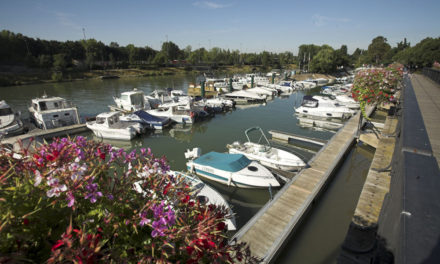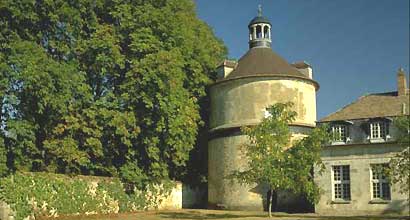
Canoeing on the Marne river
Known as the ‘Petite Couronne’, with a population of over 1.2 million, the Val-de-Marne has 15 kms of the Seine and 24 kms of the Marne running through the department. River tourism is one of the greatest assets of this department, with a variety of river ports of which the marina at Nogent sur Marne is one of the most sizeable. Nogent also has many colourful restaurants along the river and the Musée de Nogent which covers all matters of historical and regional importance and especially features pictures of the development of life on the river banks with the growth of the ‘ginguettes’ or river side restaurants frequented by Parisians at weekends. The Banks of the Marne attracted the attentions of such artists as Pissaro (Bac de la Varenne), Cézanne (Pont de Créteil), Utrillo and Brayer.
Towns in the Val de Marne
Hotels in Val de Marne
History
The Aqueduc Romain dating from the 2nd century extending to 15 kms, once crossed the Bièvre on a bridge some 330 metres in lengths, traces of which still remain at Cachan and Arcueil. The Aqueduc Médicis at Cachan of which a 17th century bridge remains was built by the order of Marie de Médici to carry water from Rungis to the Palais of Luxembourg. This formidable structure extends to 1.6 km and the centre of each arch is 109 metres high. Milling was once a significant industry in the 19th century but now only the Moulin de la Chaussée survives in its restored state at Saint-Maurice. As one would expect in the ‘department of water’, there is a plethora of locks and weirs, fountains and wells, boathouses and wash-houses.
Champigny
Another notable feature of the department is the 2,000 or more family allotments, more than in any other department in Isle de France, which play a considerable role in protecting the local environment as well as fostering community life. With exceptional landscapes, flora and fauna, the department offers varied opportunities for leisure pursuits. There are some 13 museums. At Champigny in the Parc Vercors (Vercors being a pseudonym of the founder of the underground ‘Editions de Minuit’), the Museum of the Resistance covers the years 1930-45.
Bois de Vincennes
Once the property of the Bishop of Paris , the Bois de Vincennes extends to some 995 hectares including lakes, a zoo, a childrens’ farm, a racecource and the Cartoucherie theatres and festivals in the Floral Park. The Château de Vincennes had its origins in the 12th century. Louis VII had a hunting lodge built to which a country manor was added under Philippe-Auguste and Saint Louis. A keep was begun around 1337 and finished by Charles V, who was born in Vincennes, defended by a wide ditch and nine rectangular towers. Finally, the Sainte-Chapelle was completed in 1552 under Henri II. In the 17th century, Le Vau was responsible for the King and Queen’s pavilions at which point it became the third royal residence. Suffering a degree of demolition and restoration in the intervening years, the Château has now regained its original dignity and is open year round excepting public holidays. The Château de Grosbois at Boissy-Saint-Léger was constructed in the 16th century by Raoul Moreau, the Royal Treasurer and sold to Charles de Valois, Duke of Angoulême, an illegitimate son of Charles IX. Since his death in 1650, it has had a number of different owners, the last of whom, Napoléon Berthier, was responsible for the extensive library with over 3,000 works on historical and military subjects.
| Title | Address | Description |
|---|---|---|
VAL DE MARNE | Val-de-Marne, France |





